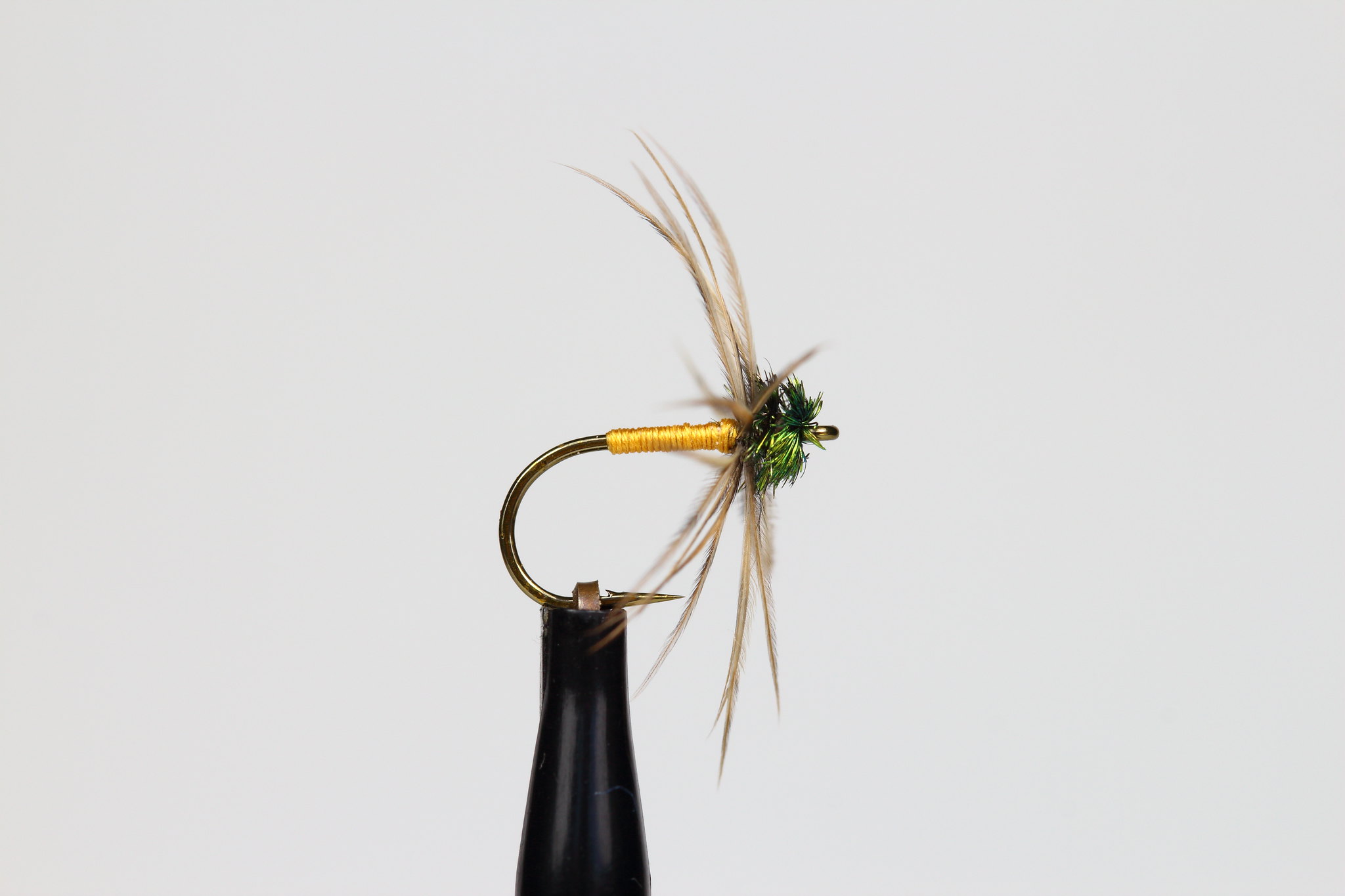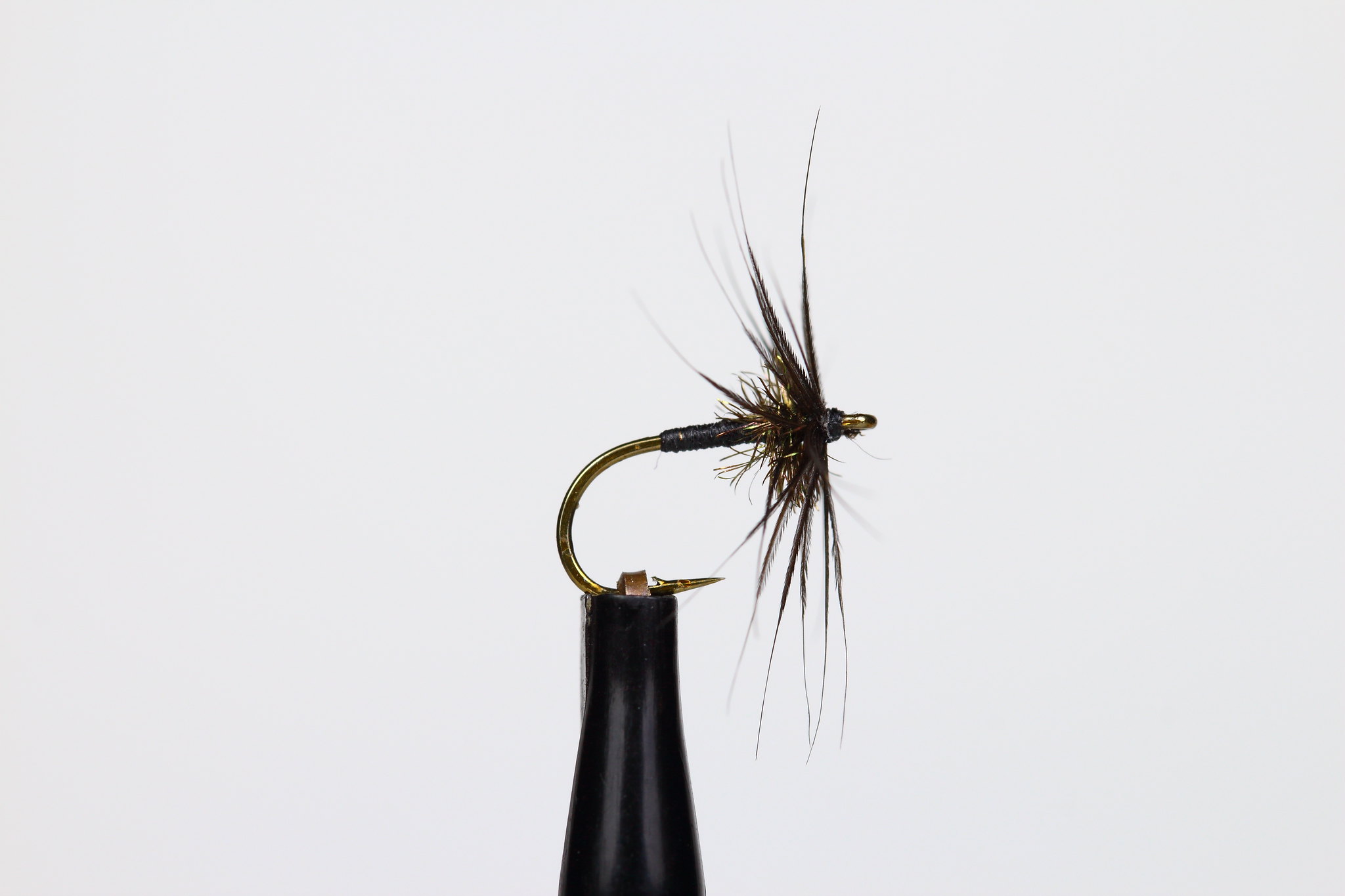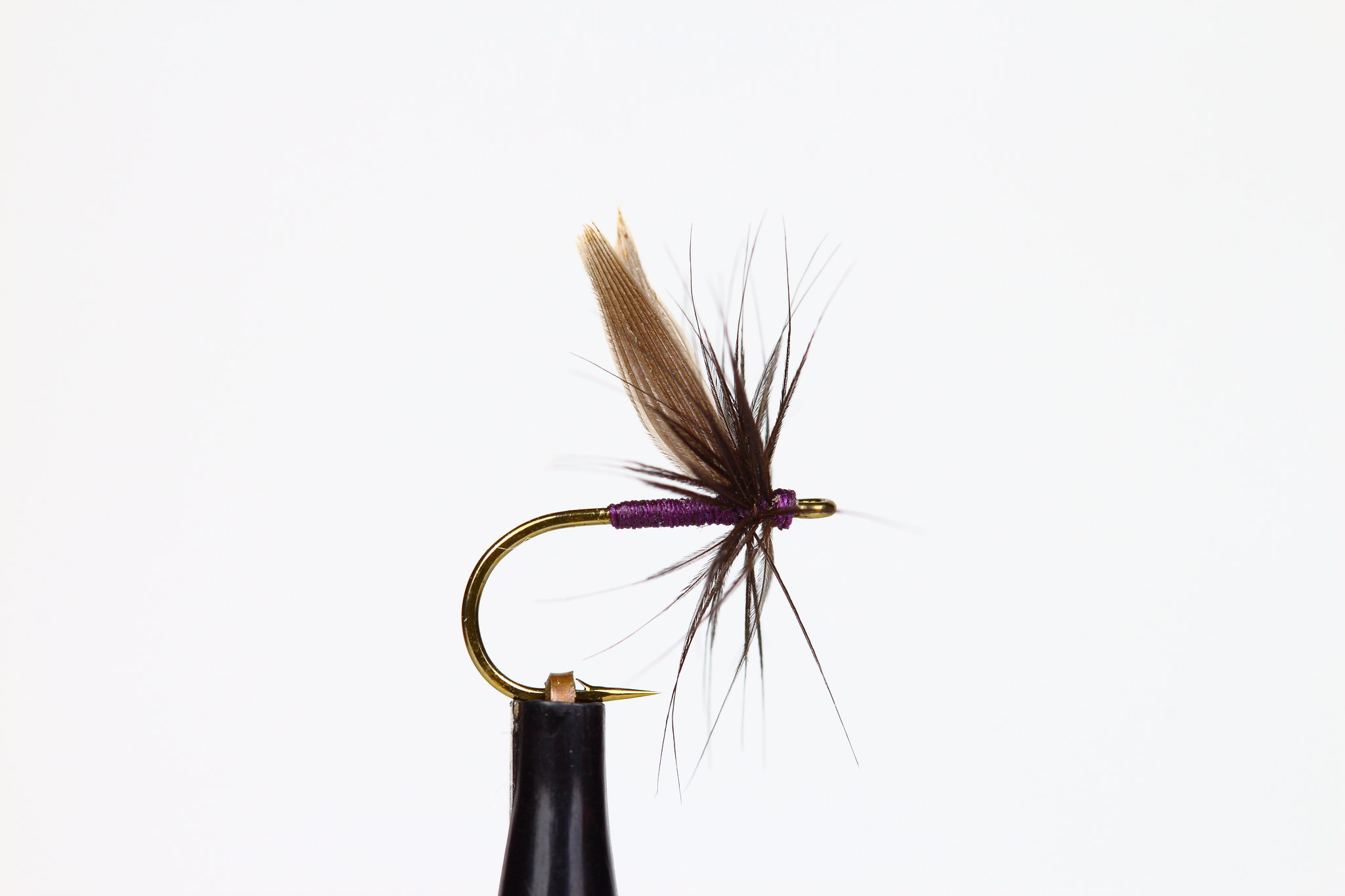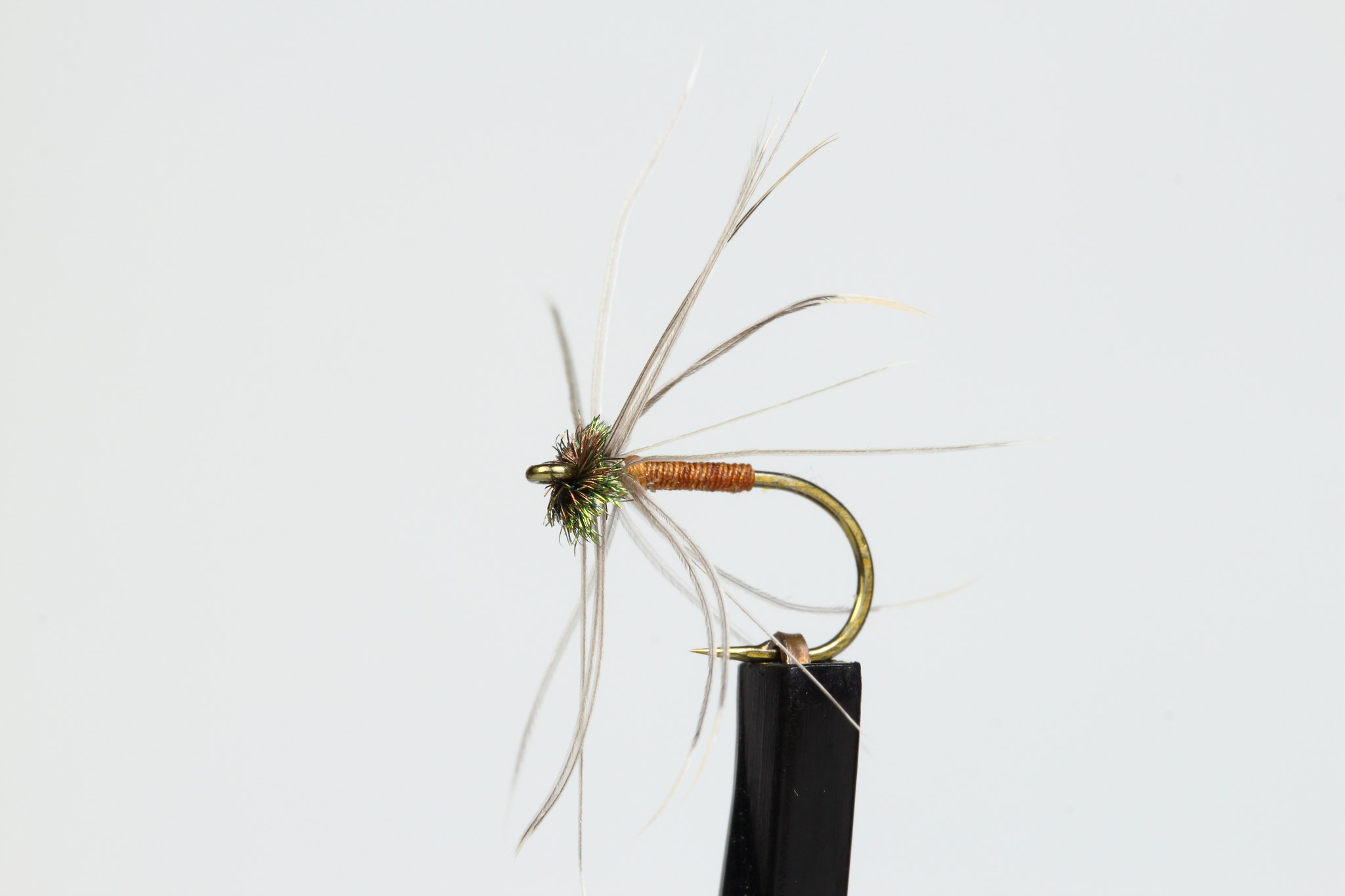I also found myself in a lucky position to spot a dead tawny owl on my journey to work; it saddens me to say I frequently see barn owls laying on the side of road but I have never come across a tawny. To try and stay within the law I removed a few marginal coverts to tide me over - I'm unlikely to ever need lots of them so they should see me through for a long time.
I have also tried herl heads for the first time. The first fly I tied I made the mistake of making it far too full, not something I repeated again - a lesson learned.
 |
| Brown Owl Hook: Partridge Spider size 14 Thread; Pearsall's Silk no.6a orange Body: Silk Hackle: Tawny Owl marginal (upper) covert Head: Peacock herl |
 |
| Black Magic Hook: Partridge Spider sizes 14-20 Thread: Pearsall's silk no.9 black Body: Silk Thorax: Peacock herl Hackle: Black hen |
Another crack at a winged wet fly - Broughton Point - I'm particularly pleased with this effort, however the silk is the wrong colour, dark claret instead of cardinal, that will teach me to select colours under tungsten light bulbs.
 |
| Broughton Point Hook: Partridge Spider size 14 Thread: Pearsall's silk no.12 cardinal - this is no.15 dark claret by mistake Wing: Starling primary feather bunched and split Hackle: Black hen |

Hi Ben
ReplyDeletemore nice examples of some classic wet flies, but can I suggest you consider using Magpie tail feathers where a head is required. They may be a little more fiddley to use, but the finished result is well worth it. You'll soon be putting your wet fly box to good use. Well done
Thank you Peter, I have only just got a magpie tail and as yet I haven't used it but I do intend on trying a few things with in including herl heads. I really hope I get to make use of all these wet flies I have been tying up.
Delete